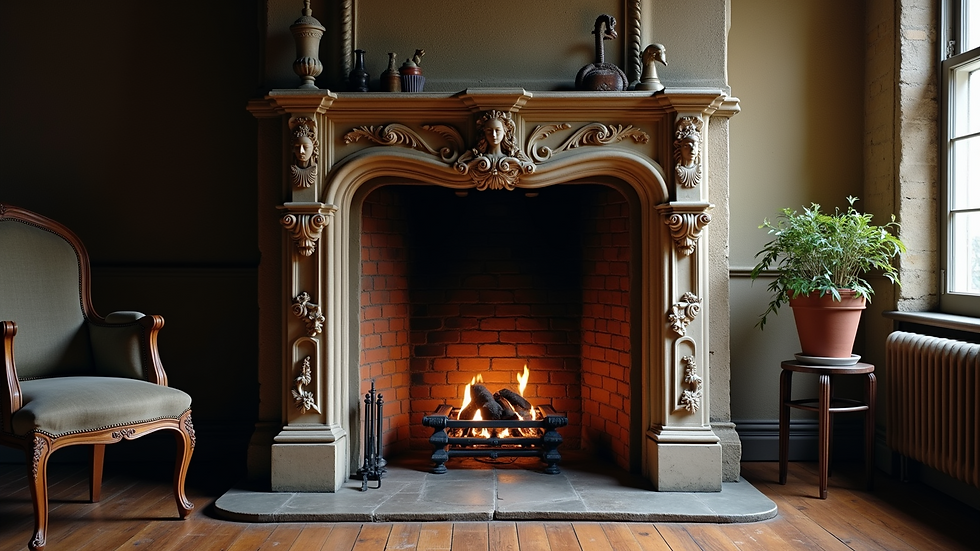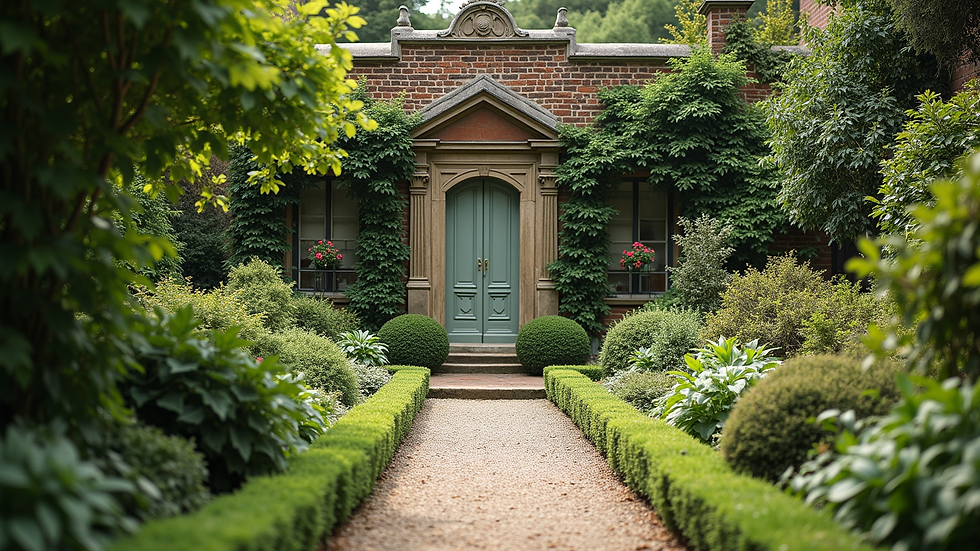Renovating Historic Properties Tips to Preserve Their Unique Charm
- Samuel B.
- Aug 31, 2025
- 5 min read
Renovating a historic property can be both a thrilling adventure and a tough task. These buildings come with rich stories and distinct architectural features that make them special. However, modernizing them while keeping their character requires thoughtful planning and attention to detail. In this guide, we will explore practical tips for renovating historic properties while preserving their unique charm. If you need professional help at any stage, start by exploring DBG Contracting’s Services.
Understanding the Importance of Preservation
Before starting your renovation, it's vital to grasp why keeping the charm of a historic property is so important. These properties are more than mere buildings; they are tokens of craftsmanship and design from a different era. They embody the history of a place and form part of the community's cultural identity.
By preserving their unique features, you enhance their visual appeal and, surprisingly, increase their value. According to the National Trust for Historic Preservation, well-maintained historic properties can appreciate in value by up to 15% compared to non-historic properties. Additionally, many of these buildings are protected by regulations that require compliance with specific guidelines during renovations.
Research and Documentation
The first step in any renovation project is to conduct thorough research. Learning about the history of your property can provide crucial insights into its original design and features.
Investigate the Property’s History
Start by collecting information about the property's architectural style, historical significance, and any past renovations. Local archives, historical societies, and libraries can be invaluable resources. For example, the San Francisco Public Library offers access to digitized collections that document local architecture and history.
Document Existing Features
Take detailed notes and photographs of existing features such as moldings, windows, doors, and other unique elements. This documentation will serve as a reference during renovation and help you maintain the property's charm.

Engage with Professionals
Renovating a historic property often needs specialized knowledge. Working with professionals who have experience in historic preservation can significantly impact your project's success.
Hire an Architect or Designer
Consider hiring an architect or designer who specializes in historic properties. They can help navigate the complexities of renovation while staying true to the property's original character. For period-accurate trim, cabinetry, or built-ins, DBG’s Millwork team can craft custom pieces that match historic profiles and finishes.
Consult with Preservation Experts
In addition to architects, working with preservation consultants can offer valuable advice on best practices for maintaining historic features. They can guide you on appropriate materials, techniques, and regulations that may apply to your renovation. This collaborative effort ensures that every detail aligns with the property’s historical significance.
Prioritize Preservation Over Modernization
While it might be tempting to modernize every element, it's crucial to prioritize preservation.
Retain Original Features
Whenever possible, keep original features like moldings, fireplaces, and flooring. These elements contribute greatly to the property’s character. If repairs are needed, opt for materials that closely match the originals. For historic flooring that needs professional attention, DBG’s Flooring options include restoration-friendly approaches
Use Compatible Materials
When adding new materials, ensure they align with the historic character. For example, if you need to replace windows, select energy-efficient options that mimic the original style rather than modern designs. A study by the National Park Service found that using appropriate replacements can enhance energy efficiency by up to 30% without sacrificing historical integrity. DBG’s general Roofing & Exterior services can be coordinated to preserve aesthetic integrity.

Embrace Adaptive Reuse
Adaptive reuse is a sustainable approach involving repurposing existing structures for new uses while preserving their historic character. This method can breathe new life into a property without losing its charm.
Consider New Functions
Think creatively about potential new uses for the space. For example, a historic barn could be reimagined as a cozy guesthouse or an art studio. Doing so allows you to maintain the property’s integrity while making it functional for modern needs.
Blend Old and New
When introducing new elements, strive for a balance between old and new. This might mean incorporating contemporary furnishings that complement the historic architecture or adding modern conveniences that enhance comfort without detracting from the property’s unique features.
Pay Attention to Details
The finer details of a renovation can significantly impact the overall look of a historic property.
Focus on Finishes
Choose finishes that reflect the era of the property. For instance, if your home is Victorian, opt for period-appropriate wallpaper, paint colors, and fixtures. These elements can amplify the historic feel. DBG’s Painting services can apply historically sympathetic, low-VOC finishes to protect both people and materials.
Preserve Landscaping
Take note of the exterior as well! The landscaping around a historic property strongly influences its charm. Retain existing trees, shrubs, and pathways, and include historically appropriate garden features like wrought iron fences or stone pathways, which can improve curb appeal by up to 20%.

Navigate Regulations and Guidelines
Renovating a historic property often means dealing with various regulations and guidelines.
Understand Local Regulations
Before diving into renovations, familiarize yourself with local preservation laws. Many historic properties are subject to specific rules about what can be changed. Resources like the Historic Preservation section of your local government website can help clarify these requirements.
Obtain Necessary Permits
Be sure to secure all necessary permits prior to starting your work. This may include permits for structural changes, electrical updates, or landscaping alterations. Not having the right permits can lead to fines or delays, costing you time and money.
Create a Realistic Budget
Renovating a historic property might cost more than a standard renovation due to the need for specialized materials and labor.
Plan for Unexpected Costs
Create a budget that accounts for potential unforeseen costs that might pop up during your renovation. It’s common to discover hidden issues in older properties, such as structural damage or outdated wiring. A report from the National Trust for Historic Preservation notes that about 30% of renovation projects exceed initial budget estimates due to unexpected repairs.
Prioritize Essential Repairs
Focus first on crucial repairs that affect safety and structural integrity. Once these repairs are completed, allocate funds for aesthetic upgrades that enhance your property’s charm.
The Journey of Renovation
Renovating a historic property is a chance to connect the past with the present. By following these tips, you can keep the unique charm of your property while adapting it for modern living needs. Remember to conduct thorough research, work with professionals, and prioritize preservation over modernization. With careful planning and attention to detail, your historic property can tell its story for many more generations.
If you’d like professional help planning a historically sensitive renovation—custom millwork, period-accurate finishes, structural repairs, or sympathetic additions—visit DBG Contracting’s Services page or Request a Quote to schedule a consultation and get started.



